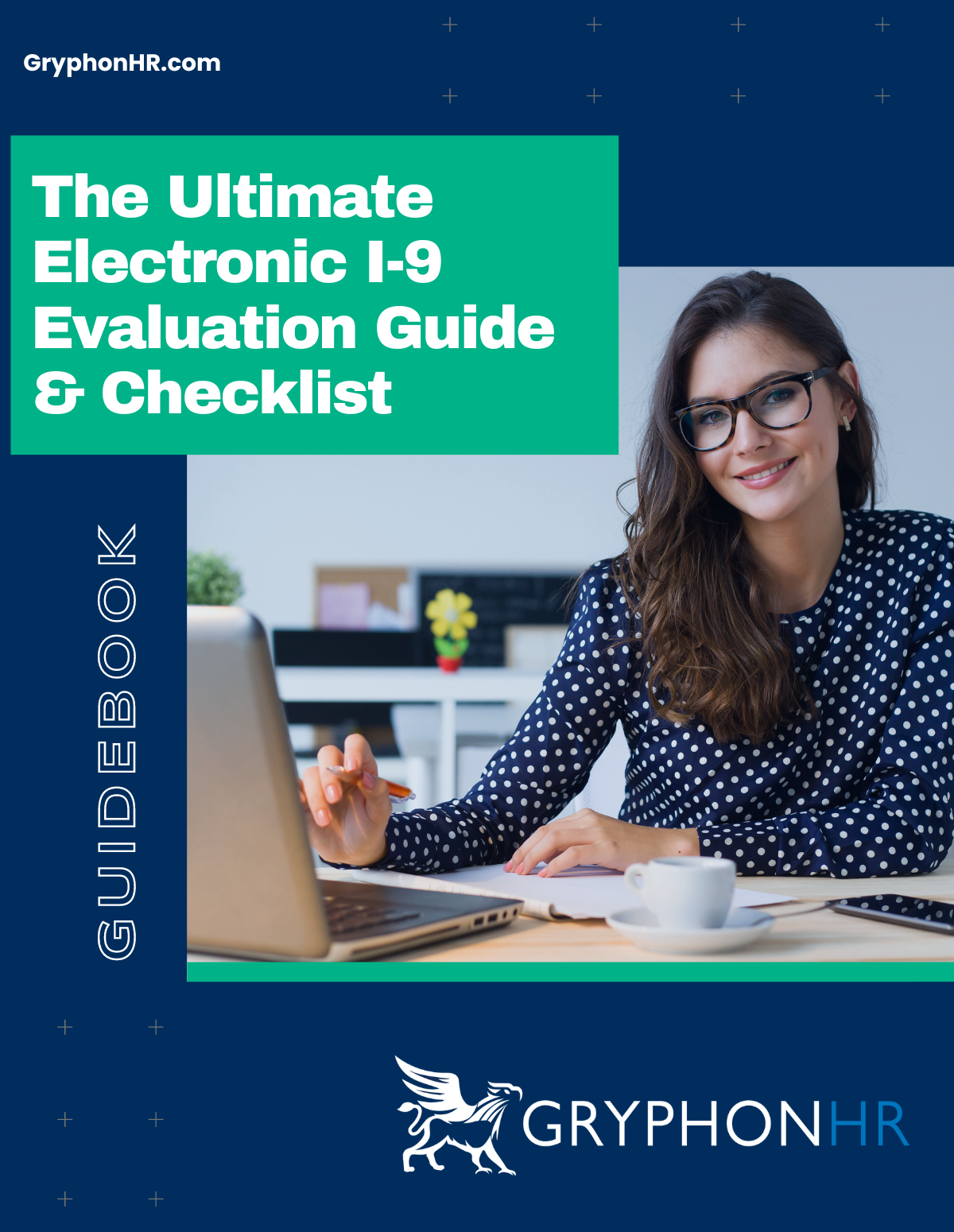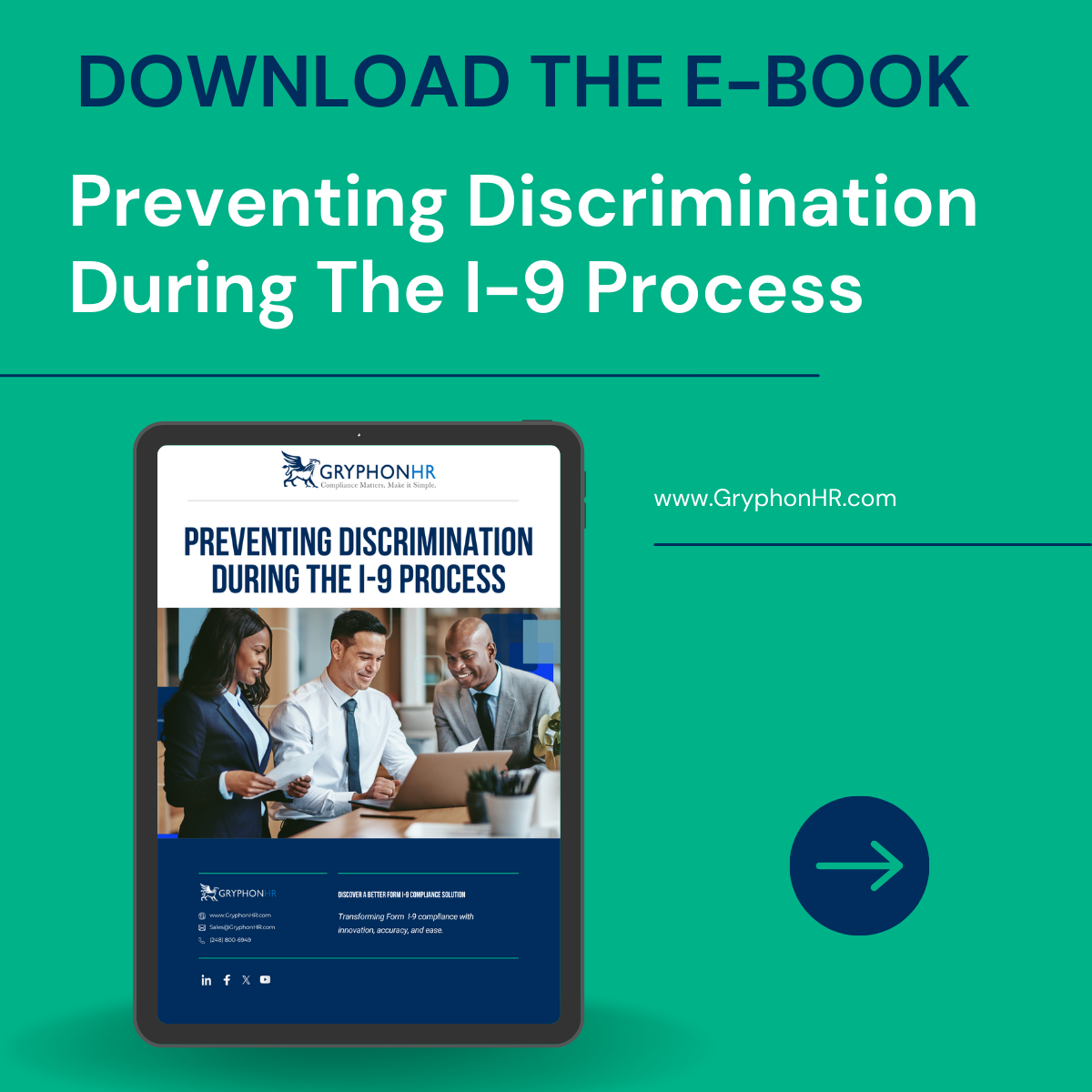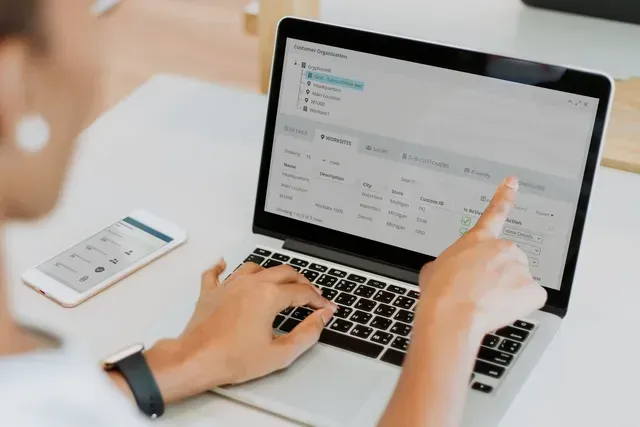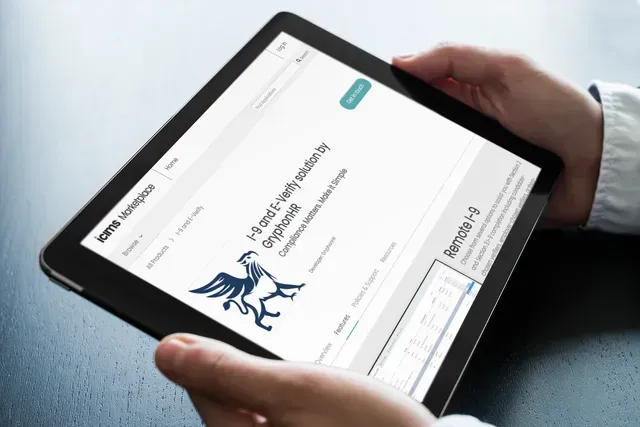Authored By: GryphonHR Blog Contributor
GryphonHR blog contributors include , consultants, researchers, and other subject-matter experts who’ve written content for our blog.
July 21, 2023
Today USCIS announced a new version of Form I-9, in addition to remote review of I-9 documents for employers participating in E-Verify.
On March 20, 2020, ICE made an announcement on its website regarding precautions related to COVID-19. As a result, employers were allowed to defer the physical examination requirements for Form I-9. This meant that they could remotely inspect the Form I-9 documents using virtual methods (e.g., via video link, fax, or email) within three business days of the employee's first day of employment. If conducting remote inspections, the employer had to obtain, inspect, and keep copies of the documents within three business days. They were also required to indicate "COVID-19" as the reason for the physical examination delay in the "Additional Information" field of the Form I-9.
Once regular operations resumed, employers were obligated to physically examine the documents and enter the notation "documents physically examined" along with the inspection date in the "Additional Information" section of the Form I-9. Initially, the provisions were allowed for 60 days from the date of the notice or within three business days after the termination of the national emergency, whichever came first.
These guidelines were originally applicable only to employers and workplaces operating remotely. The guidance emphasized that if there were employees physically present at a work location, in-person verification of identity and employment eligibility documentation for Form I-9 would remain unchanged at that time. However, in cases where newly hired or existing employees were subject to COVID-19 quarantine or lockdown protocols, the Department of Homeland Security (DHS) would evaluate these situations on a case-by-case basis.
During the ongoing COVID-19 national emergency, ICE regularly extended an announcement it made on March 20, 2020. On March 31, 2021, ICE provided an update, stating that starting from April 1, 2021, only employees who physically reported to a company's location on a regular, consistent, or predictable basis were required to undergo an in-person examination of their Form I-9 identity and employment eligibility documentation.
Employees hired on or after April 1, 2021, who exclusively worked remotely due to COVID-19-related precautions, were temporarily exempted from the physical examination of their Form I-9 documents until they began working on-site regularly or until the extension of these flexibilities was terminated, whichever came first.
Due to the continued impact of the COVID-19 pandemic, ICE extended these flexibilities multiple times. Earlier this year, ICE announced the end of the temporary flexibilities expiring on July 31, 2023; giving employers 30 days, until August 30, 2023, to physically inspect work authorization and identification documents for those employees hired using the flexibilities.
Subsequently, on October 26, 2021, USCIS invited public input on document examination practices associated with Form I-9 by publishing a notice in the Federal Register. The response included 315 public comments, with the vast majority supporting a remote document examination option, as it reduced burdens on both employers and employees. While some commenters raised concerns about document fraud, others suggested measures to address and minimize such risks.
A permanent alternative to physical document examinations for some employers who qualify with specific parameters will also be available. The alternative options are expected to be available to qualifying employers August 1, 2023.
Starting from August 1, 2023, qualified employers may use the alternative procedure for verifying employee identity and employment authorization. However, this procedure cannot be applied to employees hired before the effective date of the notice, except for specific outlined circumstances. Other employers who are not enrolled in E-Verify can use the alternative procedure after becoming a participant in good standing by enrolling in E-Verify and completing the required training.
Currently, the alternative procedure is exclusively available to qualified employers, which means those who are participants in good standing in the E-Verify system. A participant in good standing in E-Verify is an employer who has enrolled in the E-Verify program for all hiring sites within the United States that are using the alternative procedure. This employer must also comply with all E-Verify program requirements, including verifying the employment eligibility of newly hired employees in the United States.
Additionally, the employer must maintain its participant status in good standing in E-Verify while using the alternative procedure. The alternative procedure does not have a set expiration date but may be amended or canceled by the Department of Homeland Security (DHS) if necessary. Any changes to the alternative procedure will be announced by the Secretary, and public comment may be sought through the Federal Register, if appropriate.
Qualified employers must allow employees the option to choose whether they want to use the alternative procedure or submit documentation for physical examination. If an employee prefers to have their documents physically examined, the employer must comply with that request.
To verify the authenticity of the documents, the qualified employer (or their authorized representative) must examine copies of the documents presented by the employee and conduct a live video interaction with the employee to ensure that the documentation corresponds to the individual. During the live video interaction, the employee must transmit a copy of the document(s) to the employer and then present the same document(s) for verification.
Under this alternative procedure, qualified employers (those who are participants in good standing in the E-Verify system) have the option to conduct the verification process remotely through live video interactions with employees, instead of in-person meetings. Here's a summary of what the alternative procedure entails:
It's important to note that these alternative procedures are only available to qualified employers who are participants in good standing in E-Verify. Additionally, the new edition of Form I-9, effective from August 1, 2023, must be used when indicating the use of the alternative procedure on the form. Check out our infographic for a quick guide on the remote I-9 verification process.
If a qualified employer decides to utilize the alternative procedure for new employees at an E-Verify hiring site, it must apply this procedure consistently for all employees at that site. However, the employer has the option to offer the alternative procedure only for remote hires while continuing to use physical examination procedures for all employees who work onsite or in a hybrid capacity. The employer must ensure that this decision is not based on discriminatory purposes and that employees are not treated differently based on their citizenship, immigration status, or national origin.
As mentioned above DHS will also make a new version of Form I-9 available.
Learn how GryphonHR can help you streamline Form I-9 and E-Verify compliance requirements with an integrated electronic I-9 solution that makes processing E-Verify cases easier and faster. Get in touch with us or sign-up for a plan today!

Authored By: GryphonHR Blog Contributor
GryphonHR blog contributors include , consultants, researchers, and other subject-matter experts who’ve written content for our blog.
Stay updated on Form I-9 and E-Verify!


Is your I-9 compliance software placing you at risk? Learn more about the compliance requirements for electronic I-9 systems and how to evaluate important features. Skip the form and download this interactive guide!

Avoiding discrimination during the Form I-9 process is critical to preventing liability, hefty fines, and unfair hiring practices. Download our free e-book to learn more.



MENU
STAY CONNECTED
Join our newsletter to learn more about Form I-9.